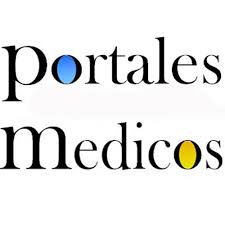Variables relacionadas con el riesgo de diabetes mediante el Score Finlandes en pacientes con reumatismo dermatológico del Hospital Universitario de Los Andes
Resumen
DOI: https://doi.org/10.53766/AcBio/2024.14.27.17
Introducción: Los pacientes con psoriasis presentan un riesgo considerable para el desarrollo de alteraciones cardiometabolicas incluida la diabetes, sin embargo los estudios sobre el tópico de diabetes en relación al FINDRISC son escasos. A razón de ello el objetivo principal del presente estudio es describir en una cohorte con psoriasis dicho riesgo en relación al FINDRISC y su correlación con el índice de severidad de la psoriasis (PASI) en un hospital suramericano desde noviembre 2017 hasta mayo 2018. Materiales y Métodos: Estudio de tipo observacional. Fueron incluidos todos los pacientes concurrentes con diagnostico de psoriasis en quienes se aplicaron los scores PASI, FINDRISC y los criterios del ATP-III para síndrome metabólico. Resultados: De un total de 55 pacientes, 55% masculinos y 45% del género femenino, existió correlación estadística entre grupos más longevos y un índice PASI elevado (p=0,023). Los principales factores de riesgo cardiovascular modificables fueron el consumo de tabaco y sedentarismo, encontrándose correlación estadística para sedentarismo (p=0,047). Los principales factores de riesgo cardiovascular no modificables fueron Hipertensión y Diabetes mostrando ambos significancia estadística (p=0,004), (p=0,0001). Los criterios ATP–III, mostraron significancia estadística para Hipertensión, glicemia, colesterol total y HDL bajo (p=0,003, p=0,008, p=0,027, p=0,017). La frecuencia de síndrome metabólico represento el 47.27% de la muestra. El género más afectado fue el masculino (61,54%). Se encontró correlación estadística en los grupos de mayor edad para presencia de Síndrome Metabólico (p=0,0001). El FINDRISC de alto riesgo mostro correlación con valoración del PASI severo y muy severo. Conclusiones: Existe una importante frecuencia de Síndrome Metabólico en los pacientes con Psoriasis así como un FINDRISC elevado a medida que el score PASI se eleva en estos pacientes. Los hallazgos aquí reportados señalan la necesidad de identificar el riesgo cardiometabolico en base a la severidad de la Psoriasis para disminuir dichos riesgos.
Recibido: 20/09/2023
Aceptado: 14/10/2023
Palabras clave
Texto completo:
PDFReferencias
Wu, J. J., Kavanaugh, A., Lebwohl, M. G., Gniadecki, R., & Merola, J. F. (2022). Psoriasis and metabolic syndrome: implications for the management and treatment of psoriasis. Journal of the European Academy of Dermatology and Venereology : JEADV, 36(6), 797–806. https://doi.org/10.1111/jdv.18044
Pinter, A., Schwarz, P., Gerdes, S., Simon, J. C., Saalbach, A., Rush, J., Melzer, N., Kramps, T., Häberle, B., & Reinhardt, M. (2021). Biologic Treatment in Combination with Lifestyle Intervention in Moderate to Severe Plaque Psoriasis and Concomitant Metabolic Syndrome: Rationale and Methodology of the METABOLyx Randomized Controlled Clinical Trial. Nutrients, 13(9), 3015. https://doi.org/10.3390/nu13093015
Hao, Y., Zhu, Y. J., Zou, S., Zhou, P., Hu, Y. W., Zhao, Q. X., Gu, L. N., Zhang, H. Z., Wang, Z., & Li, J. (2021). Metabolic Syndrome and Psoriasis: Mechanisms and Future Directions. Frontiers in immunology, 12, 711060. https://doi.org/10.3389/fimmu.2021.711060
Fernandez, A. P., Dauden, E., Gerdes, S., Lebwohl, M. G., Menter, M. A., Leonardi, C. L., Gooderham, M., Gebauer, K., Tada, Y., Lacour, J. P., Bianchi, L., Egeberg, A., Pau-Charles, I., Mendelsohn, A. M., Rozzo, S. J., & Mehta, N. N. (2022). Tildrakizumab efficacy and safety in patients with psoriasis and concomitant metabolic syndrome: post hoc analysis of 5-year data from reSURFACE 1 and reSURFACE 2. Journal of the European Academy of Dermatology and Venereology: JEADV, 36(10), 1774–1783. https://doi.org/10.1111/jdv.18167
Singh, S., Young, P., & Armstrong, A. W. (2017). An update on psoriasis and metabolic syndrome: A meta-analysis of observational studies. PloS one, 12(7), e0181039. https://doi.org/10.1371/journal.pone.0181039
Lee, H. J., Han, K. D., Park, H. E., Han, J. H., Bang, C. H., Park, Y. M., & Lee, J. H. (2021). Changes in metabolic syndrome and risk of psoriasis: a nationwide population-based study. Scientific reports, 11(1), 24043. https://doi.org/10.1038/s41598-021-03174-2
Hu, S. C., & Lan, C. E. (2017). Psoriasis and Cardiovascular Comorbidities: Focusing on Severe Vascular Events, Cardiovascular Risk Factors and Implications for Treatment. International journal of molecular sciences, 18(10), 2211. https://doi.org/10.3390/ijms18102211
Puig L. (2017). Cardiometabolic Comorbidities in Psoriasis and Psoriatic Arthritis. International journal of molecular sciences, 19(1), 58. https://doi.org/10.3390/ijms19010058
Furue, M., Tsuji, G., Chiba, T., & Kadono, T. (2017). Cardiovascular and Metabolic Diseases Comorbid with Psoriasis: Beyond the Skin. Internal medicine (Tokyo, Japan), 56(13), 1613–1619. https://doi.org/10.2169/internalmedicine.56.8209
Ramírez-Terán, A. L., Vega-Memije, M. E., Torres-Tamayo, M., & Martínez-Alvarado, M. R. (2022). Carotid intima-media thickness in patients with psoriasis with and without metabolic syndrome. Archivos de cardiologia de Mexico, 92(3), 305–311. https://doi.org/10.24875/ACM.21000106
Sarandi, E., Krueger-Krasagakis, S., Tsoukalas, D., Sidiropoulou, P., Evangelou, G., Sifaki, M., Rudofsky, G., Drakoulis, N., & Tsatsakis, A. (2023). Psoriasis immunometabolism: progress on metabolic biomarkers and targeted therapy. Frontiers in molecular biosciences, 10, 1201912. https://doi.org/10.3389/fmolb.2023.1201912
Teklu, M., Parel, P. M., & Mehta, N. N. (2021). Psoriasis and Cardiometabolic Diseases: The Impact of Inflammation on Vascular Health. Psoriasis (Auckland, N.Z.), 11, 99–108. https://doi.org/10.2147/PTT.S320016
Chan, W. M. M., Yew, Y. W., Theng, T. S. C., Liew, C. F., & Oon, H. H. (2020). Prevalence of metabolic syndrome in patients with psoriasis: a cross-sectional study in Singapore. Singapore medical journal, 61(4), 194–199. https://doi.org/10.11622/smedj.2019152
Barros, G., Duran, P., Vera, I., & Bermúdez, V. (2022). Exploring the Links between Obesity and Psoriasis: A Comprehensive Review. International journal of molecular sciences, 23(14), 7499. https://doi.org/10.3390/ijms23147499
Langan, S. M., Seminara, N. M., Shin, D. B., Troxel, A. B., Kimmel, S. E., Mehta, N. N., Margolis, D. J., & Gelfand, J. M. (2012). Prevalence of metabolic syndrome in patients with psoriasis: a population-based study in the United Kingdom. The Journal of investigative dermatology, 132(3 Pt 1), 556–562. https://doi.org/10.1038/jid.2011.365
Masson, W., Lobo, M., & Molinero, G. (2020). Psoriasis and Cardiovascular Risk: A Comprehensive Review. Advances in therapy, 37(5), 2017–2033. https://doi.org/10.1007/s12325-020-01346-6
Polic, M. V., Miskulin, M., Smolic, M., Kralik, K., Miskulin, I., Berkovic, M. C., & Curcic, I. B. (2018). Psoriasis Severity-A Risk Factor of Insulin Resistance Independent of Metabolic Syndrome. International journal of environmental research and public health, 15(7), 1486. https://doi.org/10.3390/ijerph15071486
Adisen, E., Uzun, S., Erduran, F., & Gürer, M. A. (2018). Prevalence of smoking, alcohol consumption and metabolic syndrome in patients with psoriasis. Anais brasileiros de dermatologia, 93(2), 205–211. https://doi.org/10.1590/abd1806-4841.20186168
Merola, J. F., Kavanaugh, A., Lebwohl, M. G., Gniadecki, R., & Wu, J. J. (2022). Clinical Efficacy and Safety of Psoriasis Treatments in Patients with Concomitant Metabolic Syndrome: A Narrative Review. Dermatology and therapy, 12(10), 2201–2216. https://doi.org/10.1007/s13555-022-00790-2
Qiao, J., Jia, Q. N., & Jin, H. Z. (2020). Association between metabolic syndrome and psoriasis: a meta-analysis of observational studies with non-psoriasis control groups. Archives of medical science: AMS, 17(6), 1558–1565. https://doi.org/10.5114/aoms.2020.92434
DOI: https://www.doi.org/10.53766/AcBio/Se encuentra actualmente indizada en: | |||
 |  |  | |
  |  |  |  |
 |  |  |  |
 |  |  | |
![]()
Todos los documentos publicados en esta revista se distribuyen bajo una
Licencia Creative Commons Atribución -No Comercial- Compartir Igual 4.0 Internacional.
Por lo que el envío, procesamiento y publicación de artículos en la revista es totalmente gratuito.




